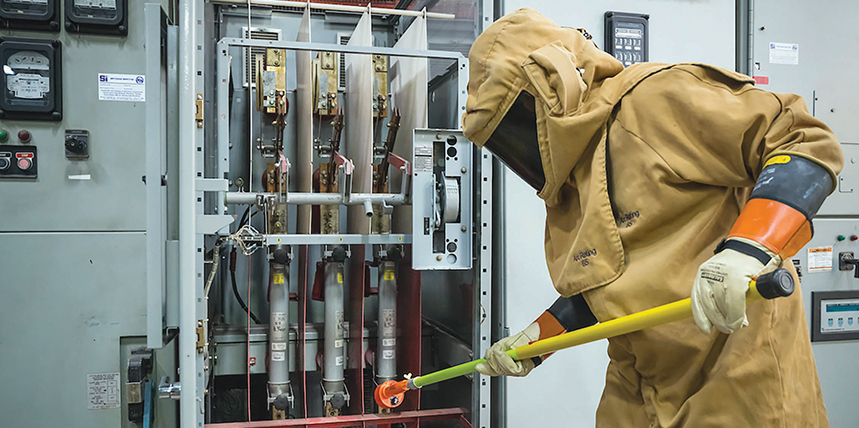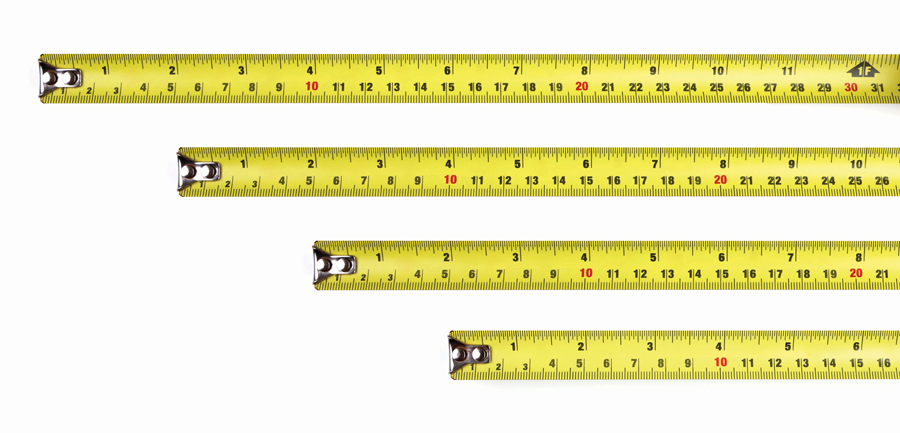As we enter into the fall season, temperatures are starting to come down, the leaves are turning, and the game of football is cranking up. As we go through football season this year, you will undoubtedly hear many times that it’s “a game of inches.”
Football being a game of inches was highlighted in a memorable way by actor Al Pacino in the 1999 movie Any Given Sunday. If you haven’t seen it, just Google “Al Pacino best speech — Any Given Sunday.” You’ll find it’s a great motivational speech…even beyond football.
The speech scene is a little over four minutes long. His team is in the biggest game of their lives, and things aren’t going well. In the locker room at halftime, Pacino addresses the team — he needs to get them fired up for the balance of the game. In the middle of the speech, he says this:
You find out that life is just a game of inches. So is football. Because in either game, life or football, the margin for error is so small. I mean one half-step too late or too early, you don’t quite make it. One half-second too slow or too fast, and you don’t quite catch it. The inches we need are everywhere around us. They are in every break of the game, every minute, every second.
We should think about this. How safe are you on the job? At home? In everyday life? Often, the difference between something good or something detrimental is determined by the smallest of margins. And it’s often just inches.
SAFE WORK DISTANCES
Safe work distances while working on or near electrical equipment are measured in inches. If you are not familiar with key dimensions in your life as an electrical worker, it can have a significant impact on you. It can be the difference between having a safe day on the job…or suffering an injury.
So take time to remind yourself, and those around you, of key dimensional criteria. When working on or near energized conductors or circuits, there are many dimensions and boundaries you should know and, more important, understand why you should know about them.
Arc Flash Boundary
Simply put, this is how close you can get to a piece of energized equipment or circuit part before receiving a significant burn injury should it be involved in an electrical fault. It’s the distance at which you could receive the onset of a second-degree burn.
The magic number? According to the Stoll skin burn model, the formula is 1.2 cal/cm2 of exposure for one second of time. So when you see an arc flash label on a piece of equipment and it gives you a distance number – that’s the distance at which unprotected skin will be affected.
Limited Approach Boundary
The limited approach boundary is the distance from an energized part at which a shock hazard exists. Remember, this is the boundary that an unqualified person must stay out of! It’s also the trigger point where you, as a qualified electrical worker, must take extra care and steps to protect yourself and those around you.
Here are a few key excerpts from NFPA 70E Table 130.4(E)(a):
Unqualified? Stay Back Ten Feet!
If it’s an exposed movable conductor* and the voltage is 72.5 kV or less, stay at least ten feet away (120 inches). *Note: An exposed movable conductor is a condition where the distance between a conductor and a person is not under the control of the person. For example, an overhead line would be considered an exposed movable conductor.
Restricted Approach Boundary
Now you are in the danger zone! This is the area where there is an increased likelihood of electric shock, most often because of the possibility of arc-over combined with inadvertent movement. The message here: Be careful! While you need to verify before each and every task, here are a few dimensions of an exposed fixed circuit part, in the game of inches, that you should memorize and make part of your everyday knowledge:
750-volts Three feet, six inches and below: (42 inches)
15 kV: Five feet (60 inches)
34.5 kV: Six feet (72 inches)
138 kV: Ten feet (120 inches)
230 kV: Thirteen feet (156 inches)
Note: Refer to NFPA 70E Table 130.4(E)(a) for the complete list.
Shock Protection Boundaries
You may have heard this term before because we just talked about it. The limited approach and restricted approach boundaries are both shock-protection boundaries. Basically, one pertains to non-qualified personnel (limited approach) and one pertains to qualified personnel (restricted approach). Remember, if people are working near the limited approach boundary, you must apply alerting techniques! For guidance on alerting techniques, see NFPA 70E 130.7(E).
Be sure you know the difference in the boundaries — it’s important!
Working Distance
So what is “working distance?” According to the 70E, it is:
The distance between a person’s face and chest area and a prospective arc source.
Remember those arc flash labels? The incident energy values on the label are based on how close you can get to the equipment before you receive the onset of a second-degree burn, which is the working distance. But remember: The definition is your face and chest…but the start of an incident is often near your hands… so keep that in mind. The incident energy at your hands and arms is likely much higher near the source. So inches matter!
SUMMARY
The reality is this: Life can change in an instant, often due to the narrowest of margins and dimensions. Make sure you understand the critical distances in electrical work that can mean the difference between life, personal injury, and death. Be familiar with nominal voltages, working distances, and approach boundaries. In the game of inches, it means a lot.
And finally, before working on it — hey, turn it off!
Now, whattaya gonna do?
REFERENCE
Warner Brothers. “Al Pacino’s Locker Room Speech,” Any Given Sunday, 1999. Accessed at https://www.youtube.com/watch?v=f1yWSePMqsk.
 Ron Widup is the Vice Chairman, Board of Directors, and Senior Advisor, Technical Services for Shermco Industries and has been with Shermco since 1983. He is a member of the NETA Board of Directors and Standards Review Council; a Principal member of the Technical Committee on Standard for Electrical Safety in the Workplace (NFPA 70E); Principal member of the National Electrical Code (NFPA 70) Code Panel 11; Principal member and Chairman of the Technical Committee on Standard for Competency of Third-Party Evaluation Bodies (NFPA 790); Principal member and Chairman of the Technical Committee on Recommended Practice and Procedures for Unlabeled Electrical Equipment Evaluation (NFPA 791); a member of the Technical Committee Recommended Practice for Electrical Equipment Maintenance (NFPA 70B); and Vice Chair for IEEE Std. 3007.3, Recommended Practice for Electrical Safety in Industrial and Commercial Power Systems. He is a member of the Texas State Technical College System (TSTC) Board of Regents, a NETA Certified Level 4 Senior Test Technician, State of Texas Journeyman Electrician, a member of the IEEE Standards Association, an Inspector Member of the International Association of Electrical Inspectors, and an NFPA Certified Electrical Safety Compliance Professional (CESCP).
Ron Widup is the Vice Chairman, Board of Directors, and Senior Advisor, Technical Services for Shermco Industries and has been with Shermco since 1983. He is a member of the NETA Board of Directors and Standards Review Council; a Principal member of the Technical Committee on Standard for Electrical Safety in the Workplace (NFPA 70E); Principal member of the National Electrical Code (NFPA 70) Code Panel 11; Principal member and Chairman of the Technical Committee on Standard for Competency of Third-Party Evaluation Bodies (NFPA 790); Principal member and Chairman of the Technical Committee on Recommended Practice and Procedures for Unlabeled Electrical Equipment Evaluation (NFPA 791); a member of the Technical Committee Recommended Practice for Electrical Equipment Maintenance (NFPA 70B); and Vice Chair for IEEE Std. 3007.3, Recommended Practice for Electrical Safety in Industrial and Commercial Power Systems. He is a member of the Texas State Technical College System (TSTC) Board of Regents, a NETA Certified Level 4 Senior Test Technician, State of Texas Journeyman Electrician, a member of the IEEE Standards Association, an Inspector Member of the International Association of Electrical Inspectors, and an NFPA Certified Electrical Safety Compliance Professional (CESCP).


